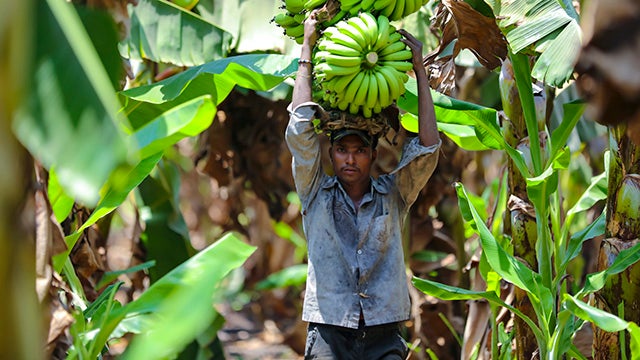Comedian John Oliver’s recent segment, above, on the lack of attention by the US media on the Indian election is well worth watching, both for its humor and insight. The nine-phase election in India, the most expansive the world has ever witnessed, is now underway, polling the globe’s largest democracy over a period of 36 days. Beyond the appeal of a democracy exercising its right to free and fair elections, the sheer logistics of registering, polling, and counting the votes of the eligible 814 million Indians is a story in its own right.
Moreover, the fact that the Indian elections are absent from US media is particularly striking as the most popular phrase to describe the US-India partnership is a relationship between “the oldest and largest democracies in the world.”
As Oliver notes, it’s true that you would be hard-pressed to find much in-depth coverage, though Alyssa Ayres has a nice piece here on the outlets that have done good reporting. There are likely several reasons for this: the length of the actual election, the fact that official results will not be announced until May 16, and many other news stories competing for attention. But is it possible that as US-India relations haven’t been much at the forefront of the American agenda that this laissez-faire attitude is simply carrying over?
What was hailed as a breakthrough strategic partnership just a few years ago has become mired in small steps forward and big steps back. There continues to be optimism on the fundamentals of the relationship. Issues such as US exports—India is the US’s 11th largest merchandise trading partner—and a burgeoning defense relationship provide positive momentum. But this has been overshadowed somewhat by recent events. The US Ambassador to India Nancy Powell has announced her resignation and is expected to leave New Delhi sometime this month. The Khobragade incident certainly has not helped US-India relations. And the elections now underway include a very real possibility that a new government will take over.
Nevertheless, we must care about the Indian elections, not least for the reasons Oliver lays out on the possibility of the next Prime Minister being Narendra Modi. Modi, and the Bharatiya Janata Party he is a part of, continue to gain momentum. Modi has also been viewed with suspicion for a long time by the US for his inability to stop Hindu riots that broke out in 2002 in Gujarat, where he was chief minister. In those riots more than 1,000 people, mostly Muslims, were killed. While Modi has not been found guilty in any court in India, including the Indian Supreme Court, some maintain that leaders affiliated with his political party helped to incite the violence. Moreover, when a New York Times reporter asked Modi about that time, he said his greatest regret was that he didn’t manage the media well. The incident struck a deep nerve with human rights groups who have ensured that Modi has been denied a visa to the United States since 2005. As a result, many in the US don’t know him, and so we need media interviews and coverage now more than ever to start thinking about what a Modi victory could mean for India, and for US-India relations.
All of this points to big questions and perhaps tough times ahead for US-India relations. But let’s hope coverage of the elections picks up so that when the results are released on May 16, we have the outlines of a plan for what the US relationship with a government led by Prime Minister Modi would look like. The clock is ticking.
Jonathon Price is the Deputy Director of the Aspen Strategy Group, a policy program of the Aspen Institute that seeks to promote high level bipartisan dialogue on critical foreign policy and national security issues.

